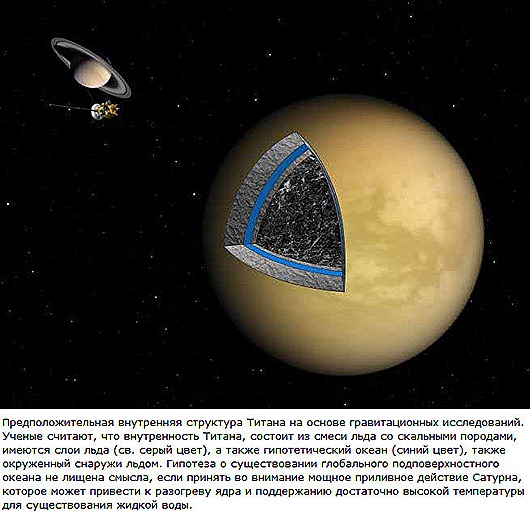Strange satellites of our planets. Asteroid Ida
We invite you to learn some interesting and educational facts about the satellites of the planets of the solar system.
1. Ganymede - large satellite. This is the largest satellite not only of Jupiter, but also of the Solar system as a whole. He's so big. Which has its own magnetic field.
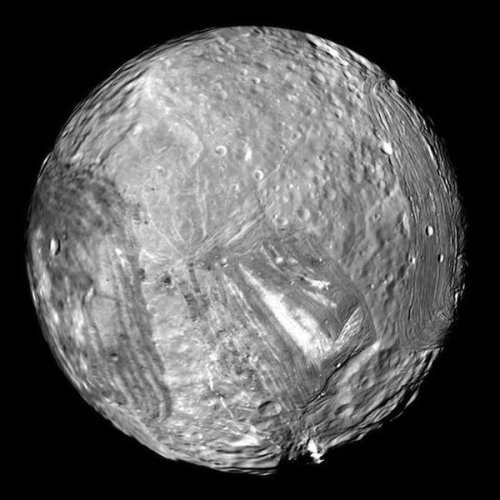
2. Miranda is an ugly companion. Considered the ugly duckling of the solar system. It seems as if someone cobbled together a satellite from pieces and sent it to revolve around Uranus. Miranda has some of the most spectacular scenery in the entire solar system, with mountain ranges and valleys forming intricate crowns and canyons, some of which are 12 times deeper than the Grand Canyon. For example, if you throw a stone at one of these, it will fall only after 10 minutes.
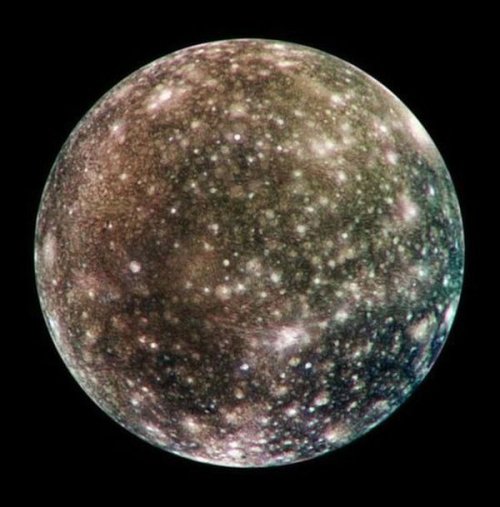
3. Callisto is the satellite with the largest number of craters. Unlike others celestial bodies Callisto has no geological activity, which makes its surface unprotected. That’s why this satellite looks like the most “beaten one”.
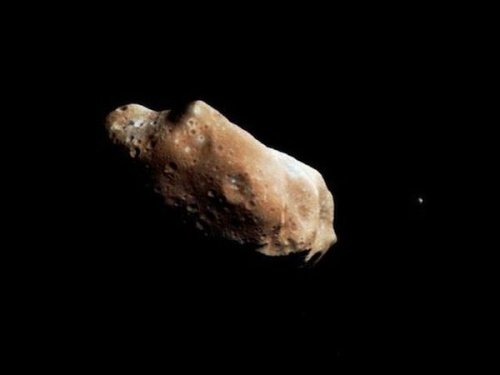
4. Dactyl is an asteroid satellite. It is the smallest moon in the entire solar system, as it is only one mile wide. In the photo you can see the satellite Ida, and Dactyl is the small dot on the right. The uniqueness of this satellite lies in the fact that it does not orbit around a planet, but around an asteroid. Previously, scientists believed that asteroids were too small to have satellites, but as you can see, they were wrong.
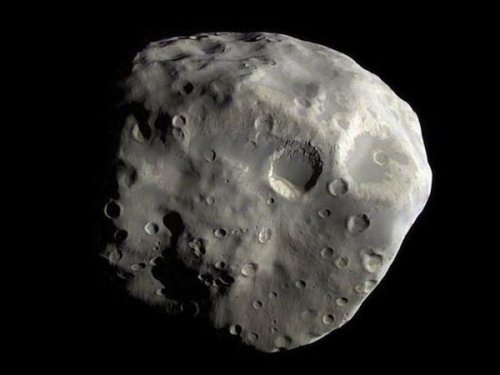
5. Epimetheus and Janus are satellites that miraculously avoided a collision. Both satellites revolve around Saturn in the same orbit. They probably used to be one satellite. What is noteworthy: every 4 years, as soon as the moment of collision occurs, they change places.
![]()
6. Enceladus is the ring bearer. This is the inner satellite of Saturn, which reflects almost 100% of the light. The surface of Enceladus is filled with geysers that eject particles of ice and dust into space, forming Saturn's "E" ring.
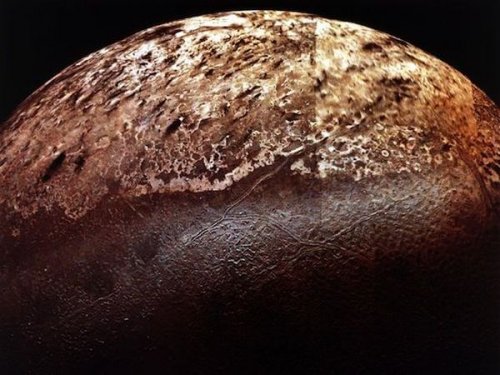
7. Triton - with ice volcanoes. It is Neptune's largest satellite. It is also the only satellite of the solar system that rotates in the opposite direction from the rotation of the planet itself. Volcanoes on Triton are active, but they do not emit lava, but water and ammonia, which freeze on the surface.
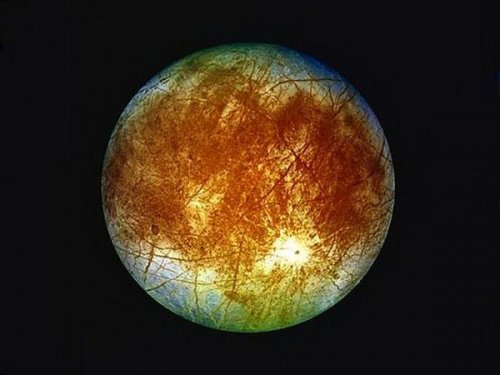
8. Europe - with large oceans. This moon of Jupiter has the smoothest surface in the solar system. The thing is that the satellite is a continuous ocean covered with ice. There is 2-3 times more water here than on Earth.
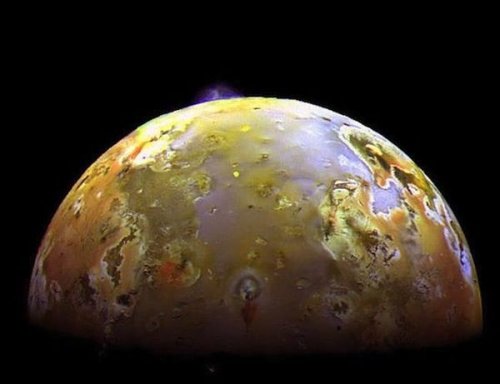
9. Io is a volcanic hell. This satellite is similar to Mordor from The Lord of the Rings. Almost the entire surface of the satellite, which revolves around Jupiter, is covered with volcanoes, the eruptions of which occur very often. There are no craters on Io, as lava fills their surface, thereby leveling it.
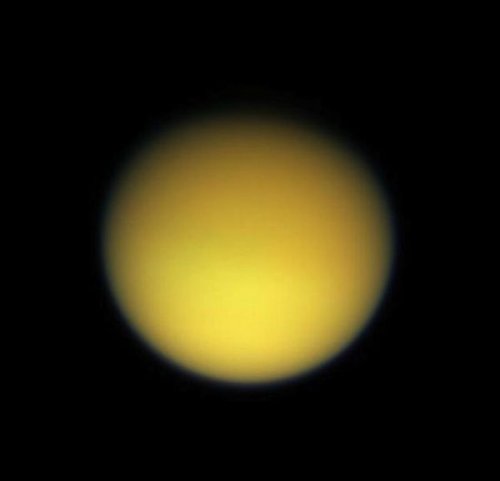
11. Titan is a home away from home. This is perhaps the strangest satellite solar system. It is the only one with an atmosphere that is several times denser than on Earth. What was under the opaque clouds remained unknown for many years. Titan's atmosphere is based on nitrogen, just like Earth's, but it also contains other gases, such as methane. If methane levels on Titan are high, methane rain may occur on the satellite. The presence of large bright spots on the surface of the satellite suggests that there may be liquid seas on the surface, which may include methane. It is worth noting that Titan is the most suitable celestial body for searching for life.
We present to your attention a selection interesting facts about the satellites of the planets of the solar system.
1. Ganymede is a large satellite
Ganymede is the largest satellite of Jupiter and, in general, the entire solar system. It is so huge that it has its own magnetic field.
2. Miranda is an ugly companion
Miranda is the ugly duckling of the solar system. At first glance, it looks like someone simply cobbled together a satellite from pieces and sent it to orbit Uranus. Miranda has one of the most diverse landscapes in the entire solar system with its steep mountain ranges, crown valleys and canyons, some 12 times deeper than the Grand Canyon. If you throw a stone into one of these, it will reach the bottom only after 10 minutes.
3. Callisto - the satellite with the largest number of craters
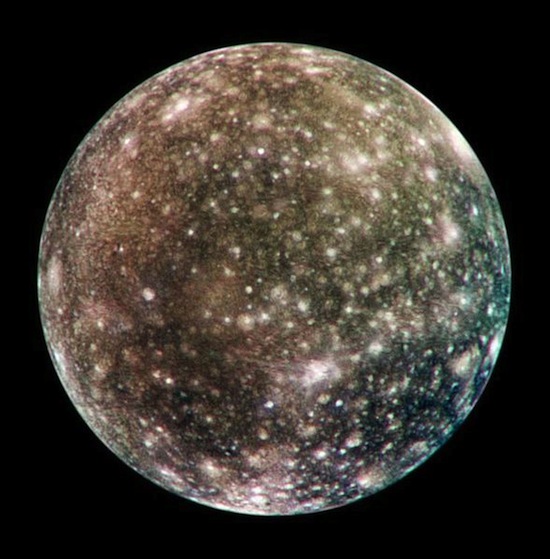
Callisto, a moon of Jupiter, is simply the pimply teenager of the solar system. Unlike other celestial bodies of the same size, Callisto has no geological activity that could protect its surface. Therefore, this satellite is the most “beaten”. There are so many craters on it that they began to overlap one another, forming entire rings inside other craters.
4. Dactyl - asteroid satellite
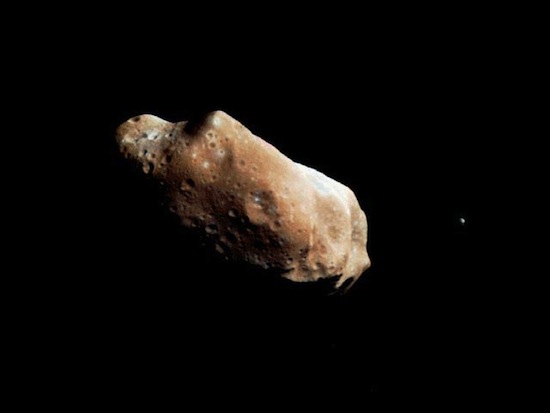
Just a mile wide, Dactyl is the solar system's smallest moon. The picture shows the asteroid Ida, and Dactyl is just a small dot on the right. Dactyl is an amazing object because it does not orbit a planet, but an asteroid. Previously, astronomers believed that asteroids were too small to have moons. But no.
5. Epimetheus and Janus - satellites that miraculously avoided a collision
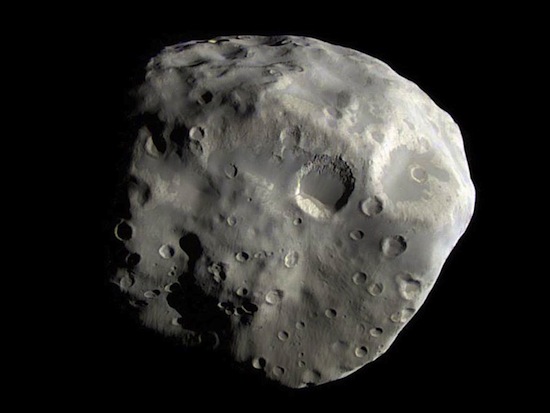
Epimetheus and Janus are satellites of Saturn that have almost the same orbit, perhaps because they used to be one satellite. But here's the thing: every 4 years they switch places in a near-collision.
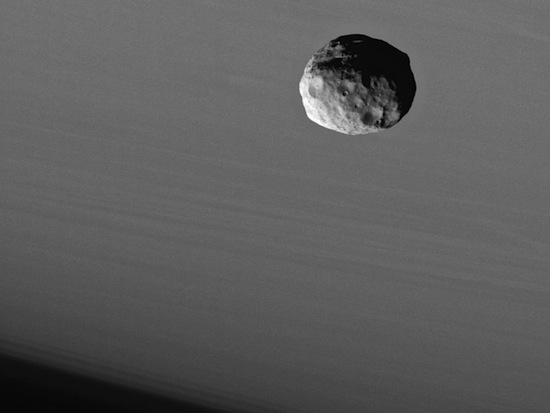
6. Enceladus - ring bearer
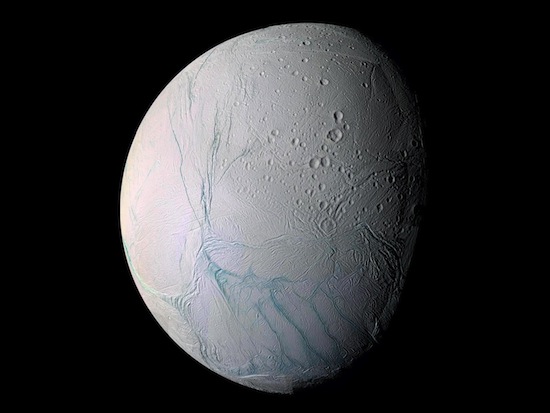
Enceladus is one of the main inner moons of Saturn. It is also one of the objects that reflects almost 100% of light. The surface of Enceladus is covered in geysers that eject particles of ice and dust into space, which are the source of Saturn's E ring.
7. Triton - with ice volcanoes
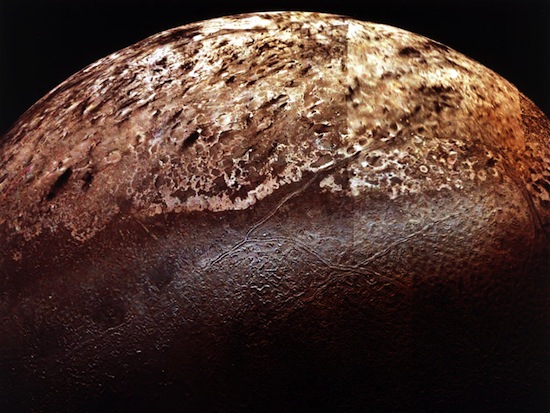
Triton is Neptune's largest moon. It is also the only satellite of the solar system that rotates around its planet in the opposite direction from the rotation of the planet itself. Triton is volcanically active. But while other volcanoes emit lava, the volcanoes on Triton emit water and ammonia, which freezes on the surface.
8. Europe - with large oceans
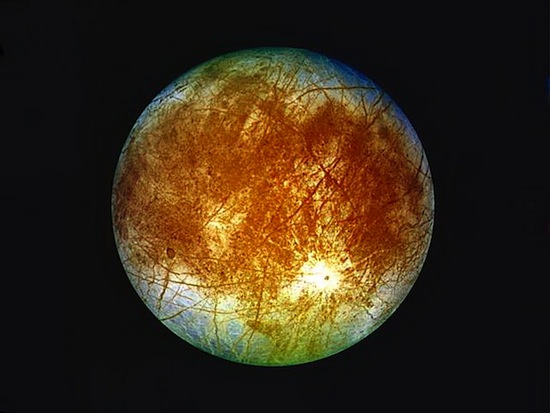
Europa, another moon of Jupiter, has one of the smoothest surfaces in the solar system. This is because the entire satellite is one continuous ocean of water under a layer of ice. But this water only exists because of Jupiter's tidal heating. This ocean contains 2–3 times more water than on Earth.
9. Io is a volcanic hell
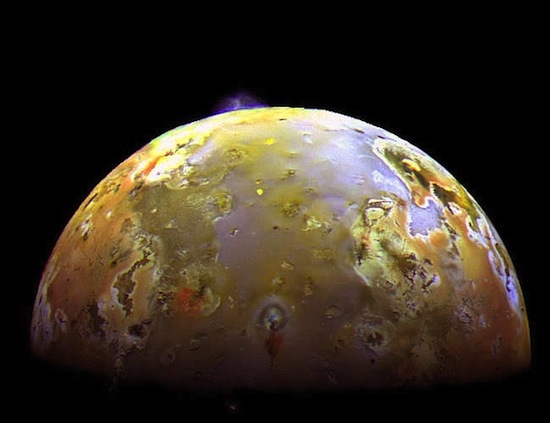
And about
Due to the enormous frictional force of Jupiter, volcanic activity constantly occurs on Io. This satellite is reminiscent of Mordor from The Lord of the Rings. In fact, the entire surface of Io is covered with volcanoes, and eruptions occur so often that Voyager was able to film the process itself (red spots in the image). There are no craters on Io, since lava fills them and thereby levels the surface of the satellite.
10. Titan - a home away from home
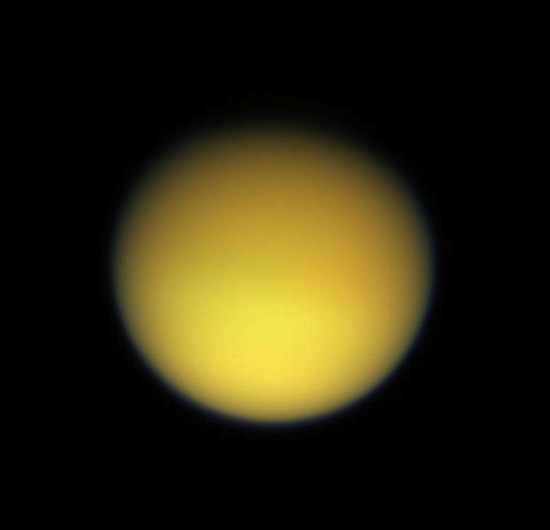
Titan is the strangest moon of the solar system. It is the only one with a dense atmosphere (denser than Earth), and what lies beneath the opaque clouds has remained a mystery for a long time. Titan's atmosphere is nitrogen-based, like Earth's, but contains other gases, such as methane. If the methane density is high enough, methane rain can occur on Titan. The existence of large bright spots on the surface of the satellite suggests that there may be liquid seas on the surface, which are most likely composed of methane. It may take a long time, but Titan is one of the best places to look for life.
Among the satellites of the planets in the solar system, there are the most amazing ones: Europa is completely covered with ocean, a real volcanic hell reigns on Io, Epimetheus and Janus are constantly chasing each other, changing places from time to time...
Titan Beyond the Rings of Saturn NASA
Our solar system consists mainly of the Sun and eight planets. Of course, people are primarily fascinated by the Earth's neighbors - Mars, Jupiter, Saturn... However, the moons revolving around them are also quite interesting.
10. Ganymede is the largest satellite
At first glance, Ganymede is very similar to our Moon, but the sizes of both satellites are not comparable. Ganymede is the largest satellite of Jupiter, and indeed the entire solar system. It even has its own magnetic poles - a unique case for planetary satellites.
If Ganymede revolved around the Sun, it could be considered a full-fledged planet: the Jupiterian moon is 8% larger than Mercury and is 3/4 the size of Mars.
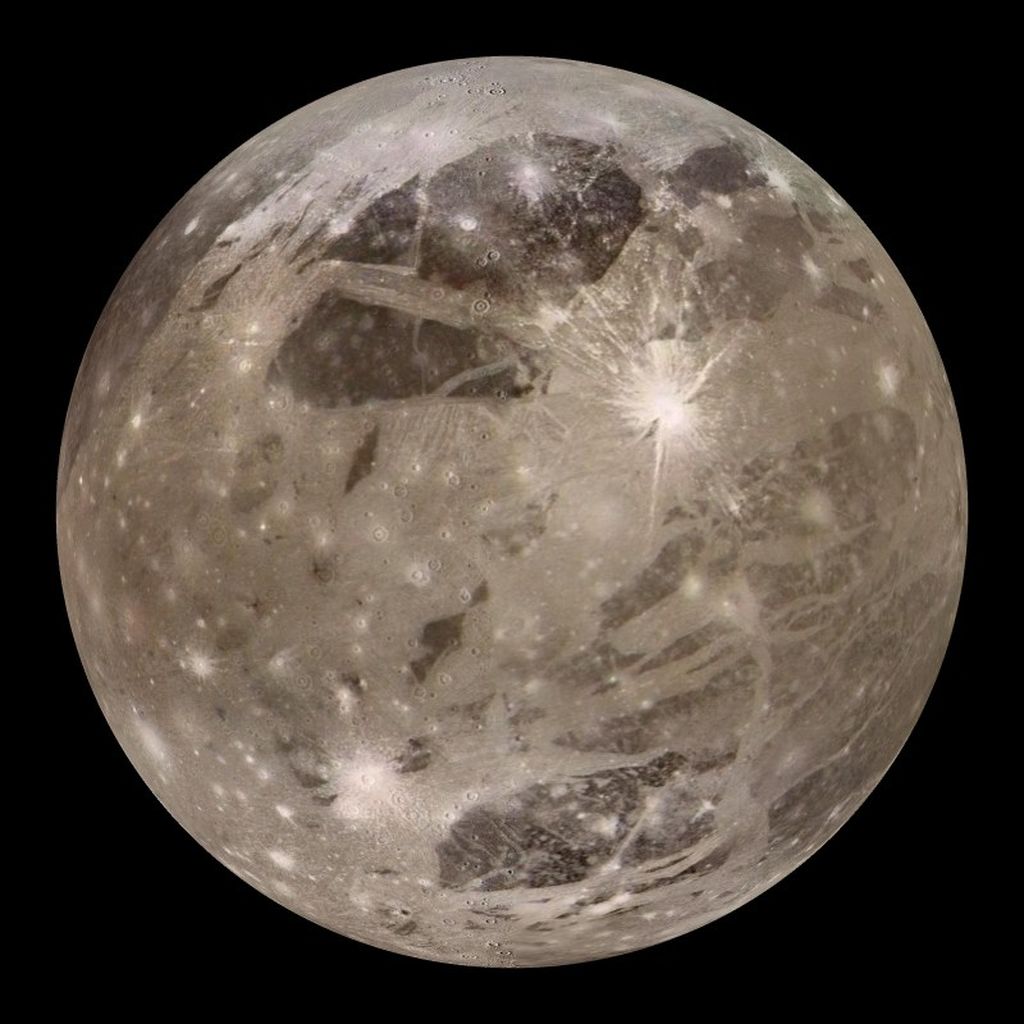
Ganymede NASA
9. Miranda - the ugly duckling
The moons of Uranus are generally not particularly beautiful, but Miranda is truly an ugly duckling among them. It seems as if the creator of all the moons of the solar system finally molded together the debris left over from a hard day's work and launched it in a lump into the orbit of Uranus.
However, if people ever manage to land on the moon on this satellite, their eyes will see sights unseen in space. Miranda has the most diverse landscape in the solar system: giant ranges alternate with deep plains, and many canyons are 12 times deeper than the famous Grand Canyon.
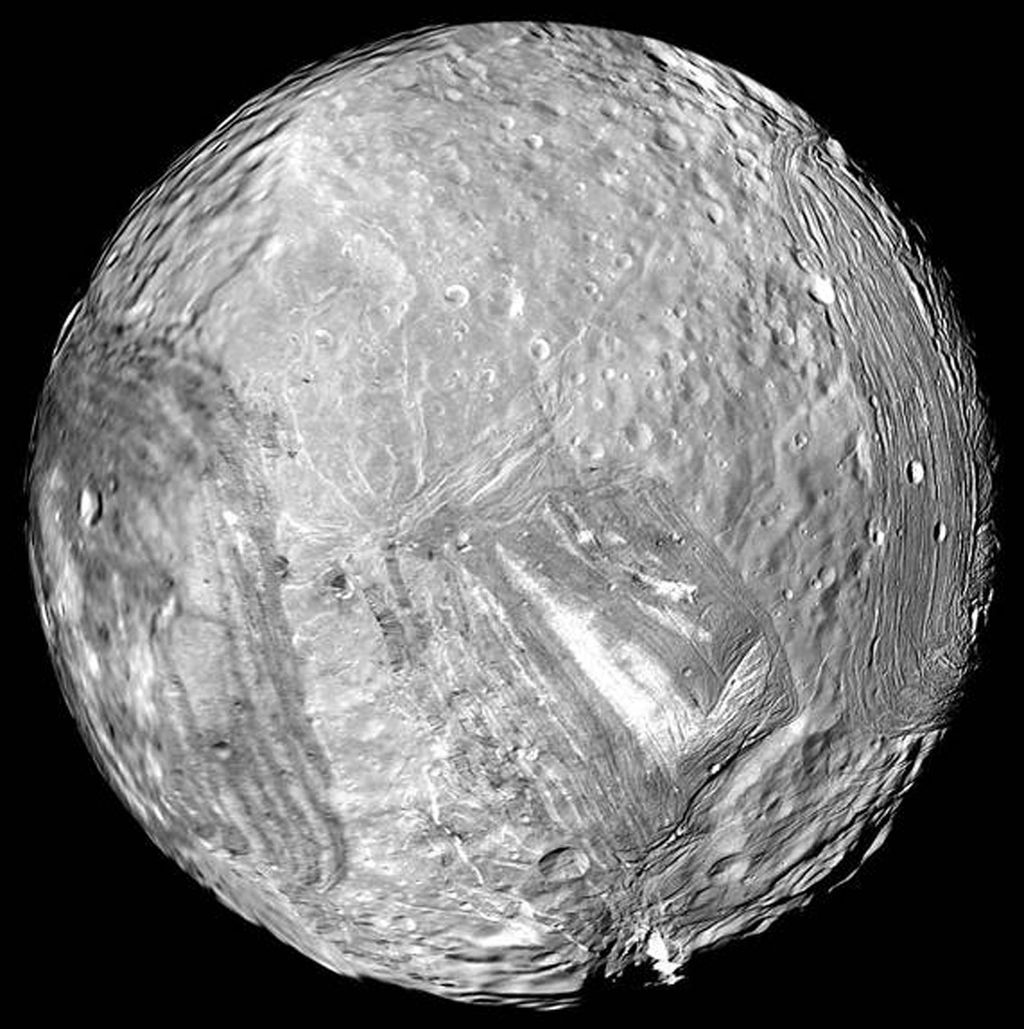
Miranda NASA
8. Callisto - record holder for craters
Another Jovian moon, Callisto, most closely resembles the face of a pimply teenager. There is no geological activity on Callisto, which in itself makes it unique in the solar system, so craters resulting from meteorite impacts are constantly superimposed on each other.
It is very difficult to find an untouched corner of Callisto; the entire moon is covered in a network of craters, making it a record holder in the solar system.
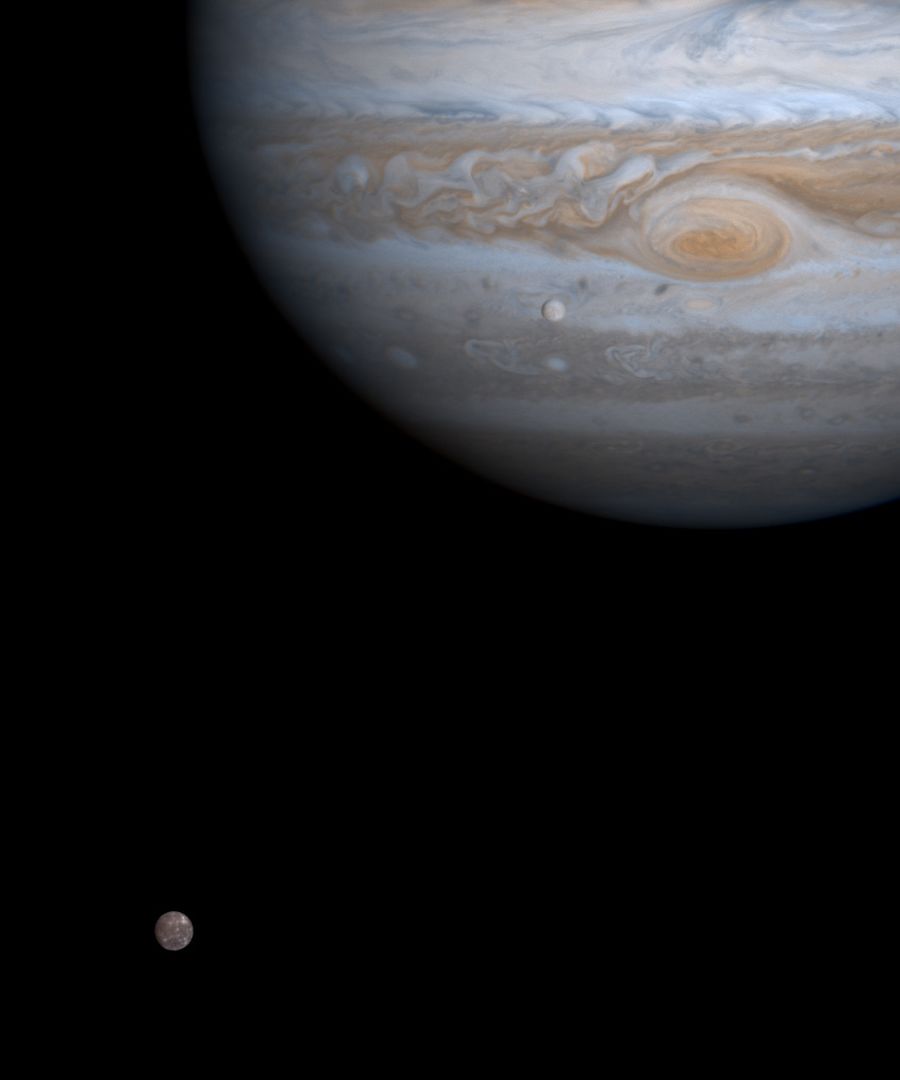
Callisto (bottom and left), Jupiter (top and right) and Europa (below and left of the Great Red Spot) NASA
7. Dactyl - asteroid satellite
Dactyl is the smallest moon in the solar system, measuring approximately 1.6 km in length. It is also one of the few moons orbiting minor asteroid planets.
In Greek mythology, Ida was the name of a mountain in which tiny creatures called dactyls (fingers) lived. Therefore, it is logical that the satellite of the asteroid Ida received such a name.
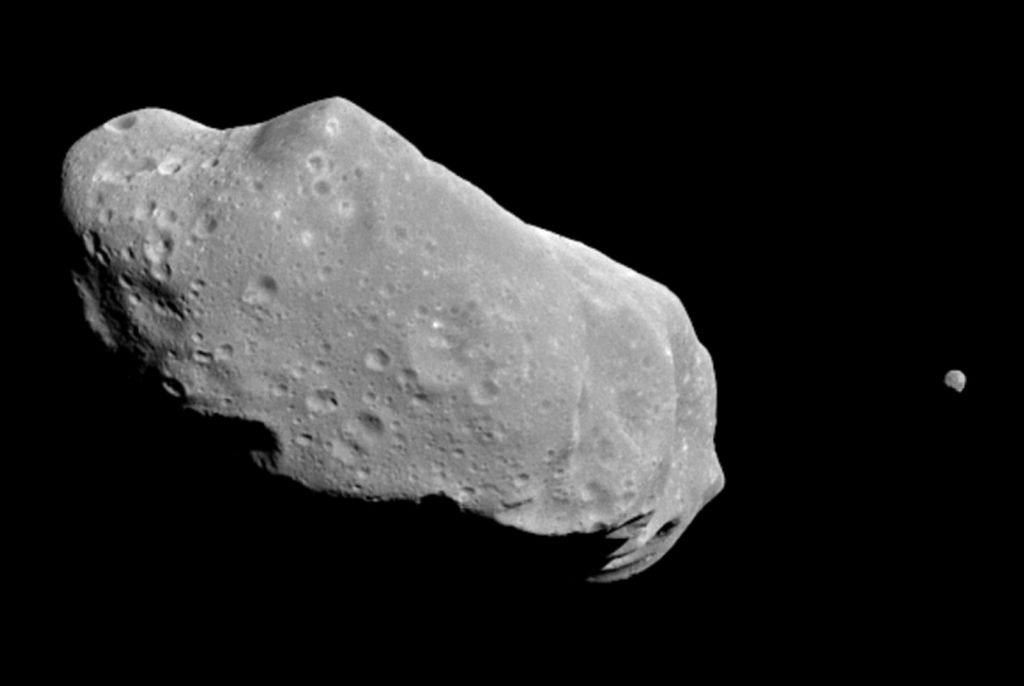
Asteroid Ida and its satellite Dactyl NASA
6. Epimetheus and Janus - the eternal race
Epimetheus and Janus are two satellites of Saturn that move in almost identical orbits, probably because in time immemorial they formed a single whole. Moreover, every four years they change places, each time miraculously avoiding a collision.

Epimetheus and Janus NASA
5. Ringbearer Enceladus
Enceladus is one of the large inner moons of Saturn. The surface of Enceladus reflects almost everything falling on it. sunlight, therefore this Saturnian moon is considered the most reflective cosmic body in the solar system.
Enceladus also has geysers that emit water vapor and dust into the open space. Researchers believe that it was thanks to the volcanic activity of its satellite that Saturn acquired the E ring, through which the orbit of Enceladus passes.
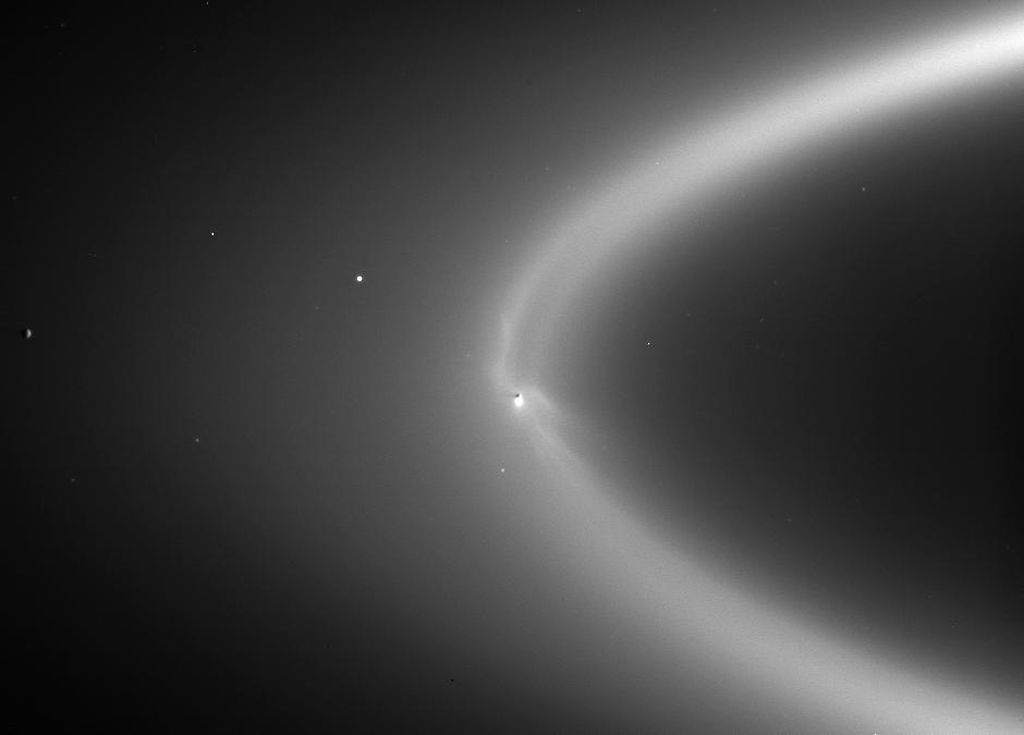
E Ring and Enceladus NASA
4. Triton - a satellite with ice volcanoes
Triton is Neptune's largest moon. It is also the only satellite in the solar system that orbits its planet in the opposite direction to its motion around the Sun.
Triton has many volcanoes, but unlike regular volcanoes that spew lava, the volcanoes on this Neptunian moon spew out water and ammonia, which immediately freeze in very cold outside temperatures.
Triton is a very bright celestial body because its icy surface reflects most of the sunlight.
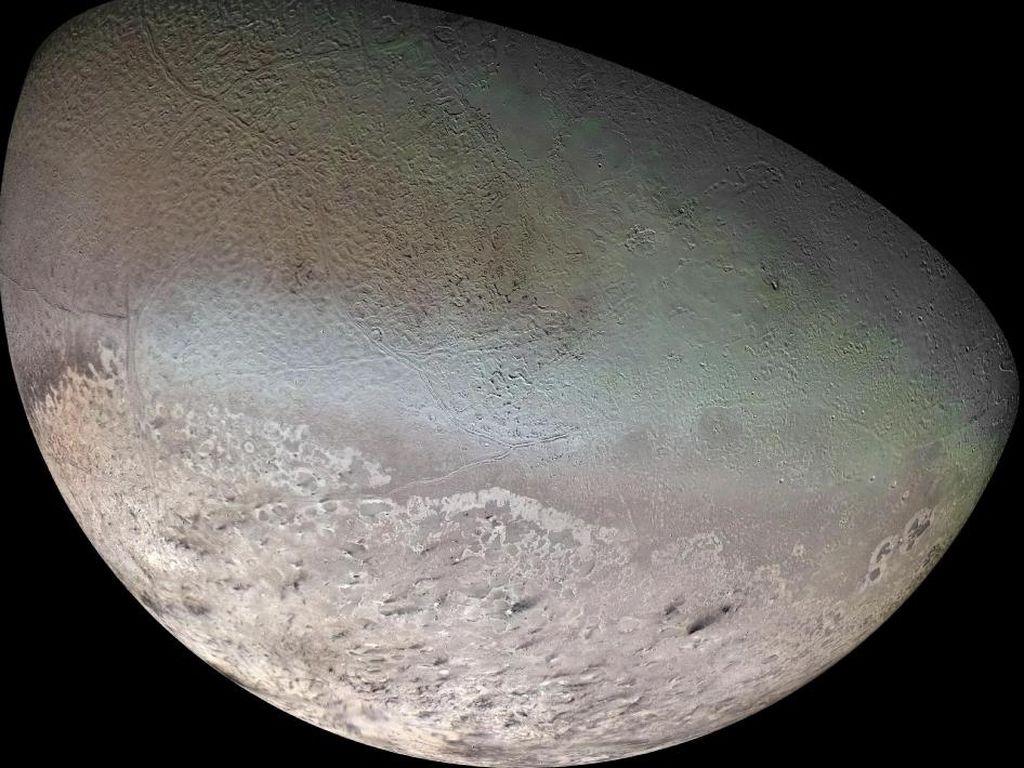
Triton NASA
3. Europe - ocean satellite
Europa is another satellite of Jupiter and has the smoothest surface in the solar system. The fact is that all of Europe is covered by an ocean with a thick crust of ice on the surface.
However, under the ice there is a huge amount of water, which is heated by the inner core of the satellite and constant tidal currents caused by Jupiter's gravitational pull. Suffice it to say that the Europa ocean contains 2-3 times more water than all the earth’s oceans combined.
According to the calculations of some scientists, the ocean waters of Europa may have such a high temperature that the appearance of life on this Jovian moon is not completely ruled out. Moreover, we are not talking about bacteria, but about much more complex and larger forms of life.
> > Ida
Ida is the second asteroid to be visited spaceship and the first to have its own satellite found.
The closest approach to the asteroid occurred on August 28, 1993, when the Galileo spacecraft passed within about 1,500 miles (about 2,400 kilometers) of Ida on its journey to . A little over 5 months later, scientists studied the images Galileo sent to and noticed that a tiny satellite was accompanying the asteroid.
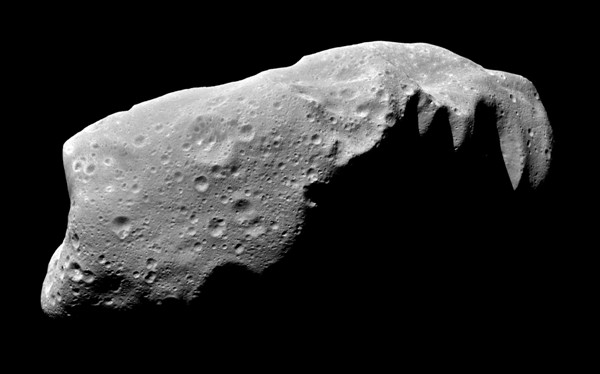
Located in the main belt between and , Ida is a Coronid asteroid believed to be debris from an ancient collision between two large objects. The asteroid is covered in craters and a deep layer of regolith (crushed rock). Ida is an S-class asteroid composed primarily of silicate rocks. This type of asteroid dominates the inner region but includes only about 17 percent of all known asteroids.
Discovery of the asteroid Ida
Ida was discovered on September 29, 1884 by the Austrian astronomer Johann Palisa at the Vienna Observatory. Its moon, Dactyl, was discovered on February 17, 1994 by the Galileo team.
How did Ida get its name?
Ida was named by Moritz von Kuffner, a Viennese brewer and amateur astronomer, after the nymph from Greek mythology who was tasked with caring for the infant Zeus along with her sister Adrastea. The International Astronomical Union named the satellite Dactyl after the mythological creatures that lived on Mount Ida on the island of Crete.
Physical characteristics of the asteroid Ida |
|||||
| Opening information | |||||
|---|---|---|---|---|---|
| opening date | September 29, 1884 | ||||
| Discoverers | Johann Palisa | ||||
| Orbital characteristics | |||||
| Major axle shaft | 428.228 million km | ||||
| Eccentricity | 0,04237 | ||||
| Circulation period | 1768,982 days | ||||
| Mood | 1.138° | ||||
| Asteroid group | Coronidae family | ||||
| physical characteristics | |||||
| Dimensions | 59.8×25.4×18.6 km | ||||
| Radius | ? | ||||
| Weight | 4.2 10 16 kg | ||||
| Density | 2.6 ± 0.5 g/cm 3 | ||||
| Albedo | 0,2383 | ||||
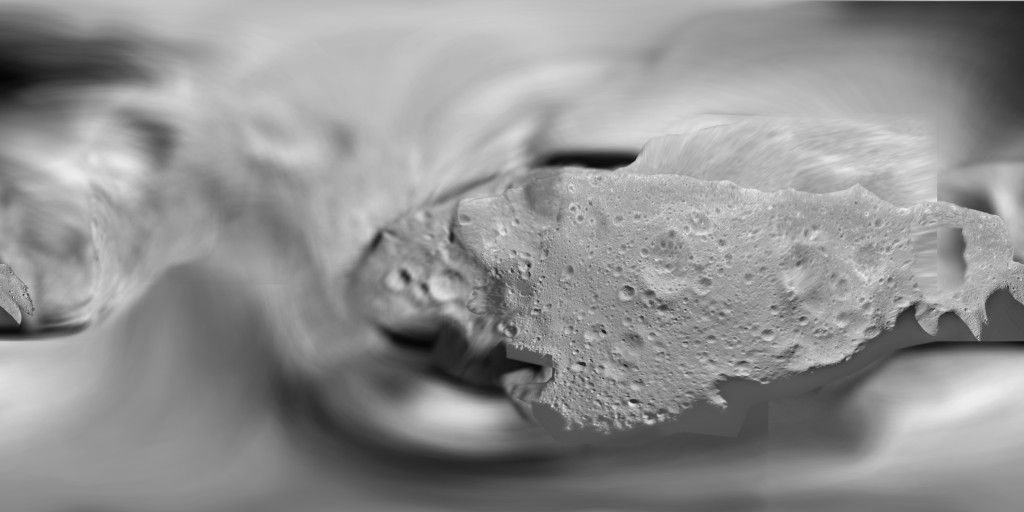
The Earth's solar system consists of the Sun and 9 planets. The planets of the solar system do not suffer from inattention, so other equally important objects of the system, such as satellites, remain unattended. But they can be more interesting than their planets...
Ganymede is a large satellite
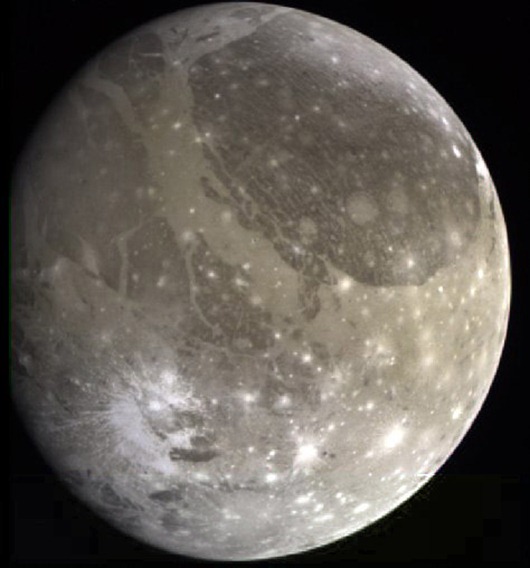
Ganymede can be confused with the Moon, but there is a slight difference - in size. Ganymede is the largest satellite of Jupiter and, in general, the entire solar system. It is so huge that it has its own magnetic field.
Miranda - Ugly Satellite
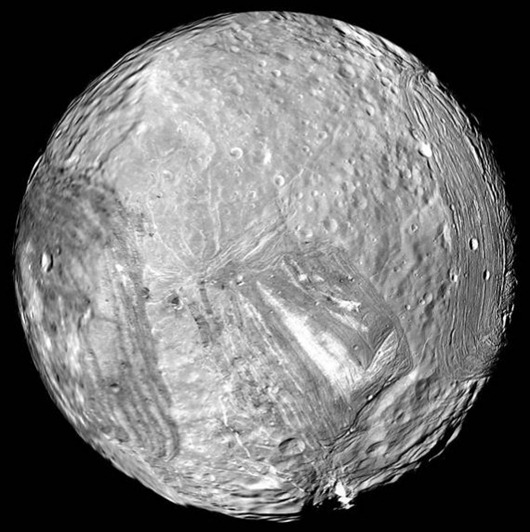
Miranda is considered the ugly duckling of the solar system. At first glance, it looks like someone simply cobbled together a satellite from pieces and sent it to orbit Uranus. Miranda has one of the most diverse landscapes in the entire solar system with its steep mountain ranges, crown valleys and canyons, some 12 times deeper than the Grand Canyon. If you throw a stone into one of these, it will reach the bottom only after 10 minutes.
Callisto is the satellite with the largest number of craters 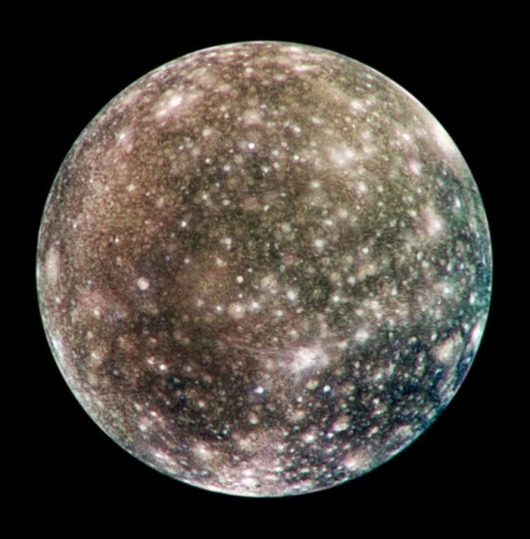
Callisto, a moon of Jupiter, is simply the pimply teenager of the solar system. Unlike other celestial bodies of the same size, Callisto has no geological activity that could protect its surface. Therefore, this satellite is the most “beaten”. There are so many craters on it that they began to overlap one another, forming entire rings inside other craters.
Dactyl - asteroid satellite
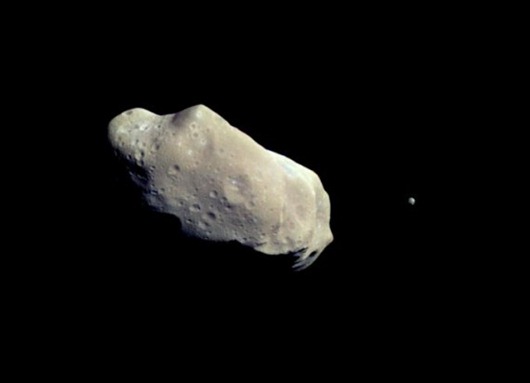
Dactyl is the smallest moon in the solar system, only a mile wide. The picture shows the asteroid Ida, and Dactyl is just a small dot on the right. Dactyl is also an amazing object because it does not revolve around a planet, but around an asteroid. Previously, astronomers believed that asteroids were too small to have moons. But no.
Epimetheus and Janus - satellites that miraculously avoided collision
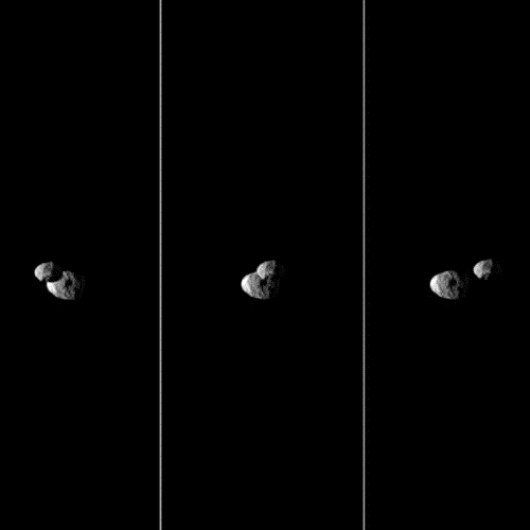
Epimetheus and Janus are satellites of Saturn that have almost the same orbit, perhaps because they used to be one satellite. But here's the thing: every 4 years they switch places in a near-collision.
Enceladus - ring bearer
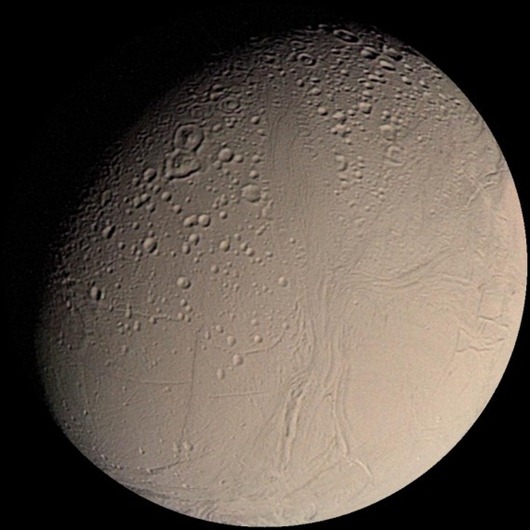
Enceladus is one of the main inner moons of Saturn. It is also one of the objects that reflects almost 100% of light. The surface of Enceladus is covered with geysers that eject ice and dust particles into space, which are the source of Saturn's E ring.
Triton - with ice volcanoes
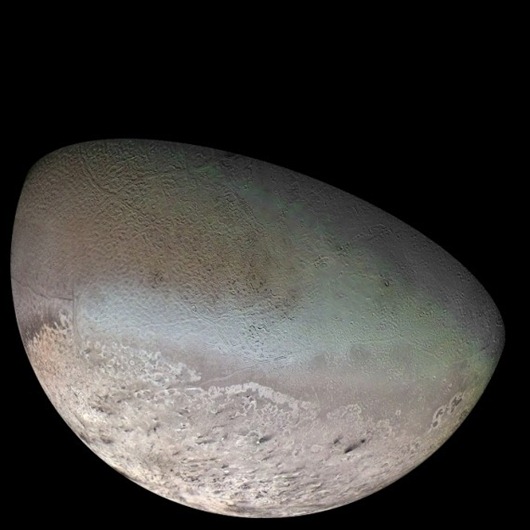
Triton is Neptune's largest satellite. It is also the only satellite of the solar system that rotates around its planet in the opposite direction from the rotation of the planet itself. Triton is volcanically active. But while other volcanoes emit lava, the volcanoes on Triton emit water and ammonia, which freezes on the surface.
Europe - with large oceans
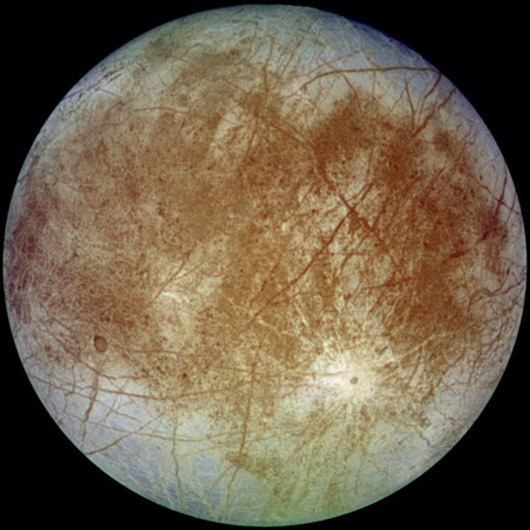
Europa, another moon of Jupiter, has one of the smoothest surfaces in the solar system. This is because the entire satellite is one continuous ocean of water under a layer of ice. But this water only exists because of Jupiter's tidal heating. There is 2-3 times more water in this ocean than on Earth.
Io is a volcanic hell
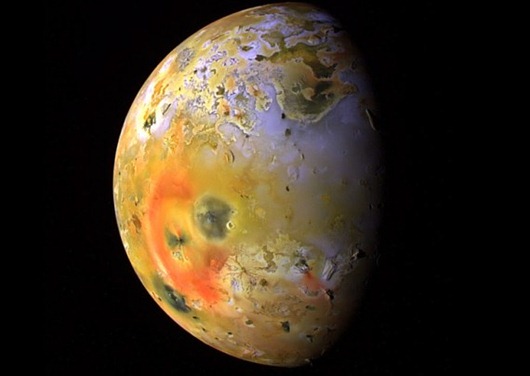
Due to the enormous frictional force of Jupiter, volcanic activity constantly occurs on Io. This satellite is reminiscent of Mordor from The Lord of the Rings. In fact, the entire surface of Io is covered with volcanoes, and eruptions occur so often that Voyager was able to film the process itself (red spots in the image). There are no craters on Io, since lava fills them and thereby levels the surface of the satellite.
Titan - a home away from home
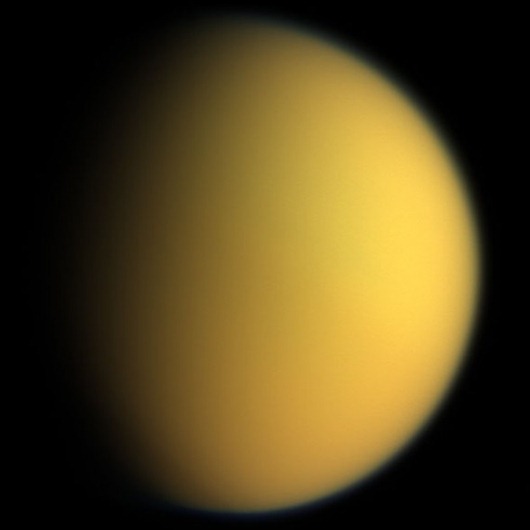
Titan is the strangest moon of the solar system. It is the only one with a dense atmosphere (denser than Earth), and what lies beneath the opaque clouds has remained a mystery for a long time. Titan's atmosphere is nitrogen-based, like Earth's, but contains other gases, such as methane.
If the methane density is high enough, methane rain can occur on Titan. The existence of large bright spots on the surface of the satellite suggests that there may be liquid seas on the surface, which are most likely composed of methane. It may take a long time, but Titan is one of the best places to look for life. 